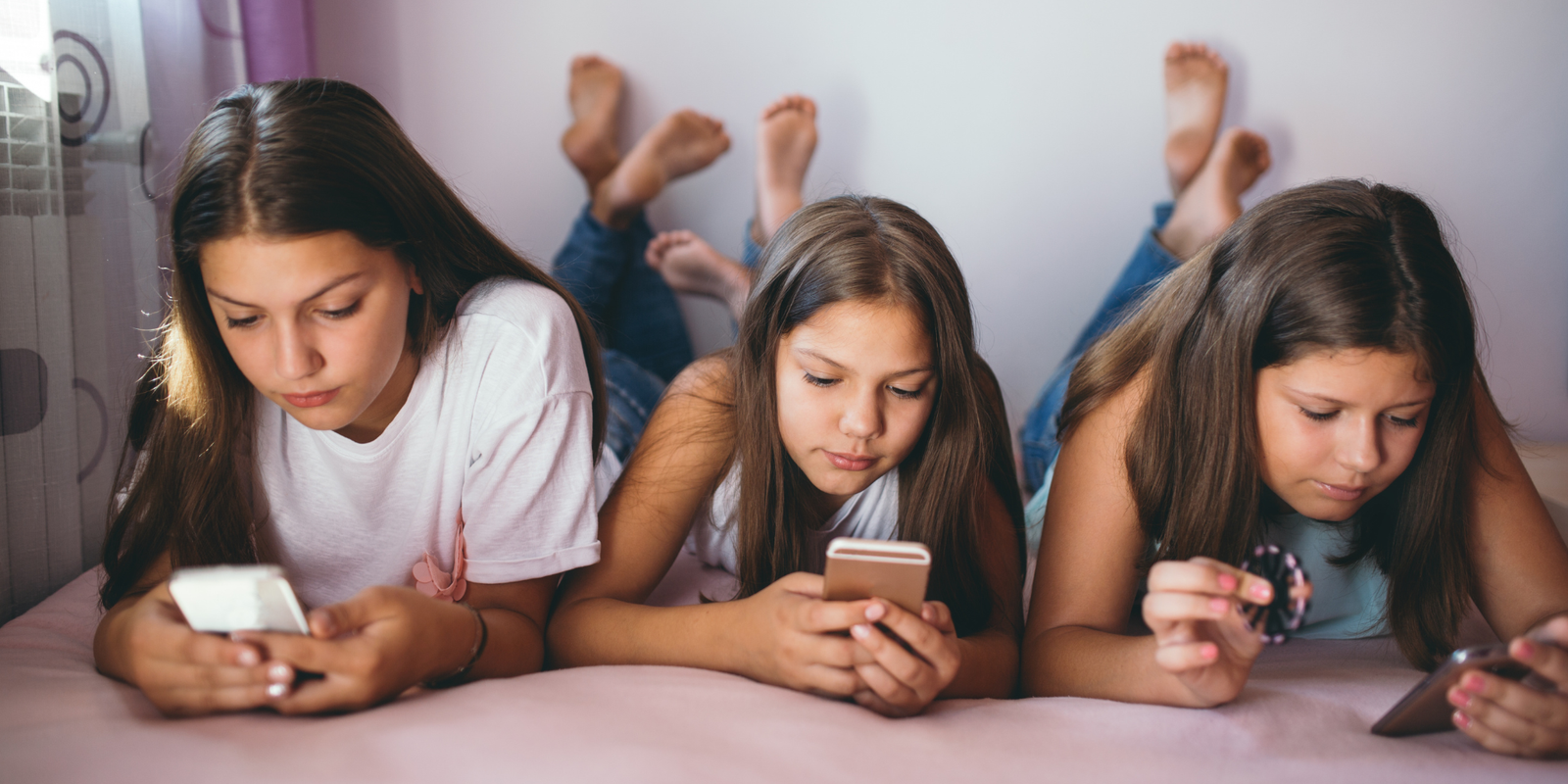In today’s digital age, social media has become an integral part of our daily lives. While it offers numerous benefits, it also poses significant challenges to our health and wellness. Understanding these impacts and learning how to manage them is crucial for maintaining a balanced lifestyle. We will explore the impact of social media on health and provide practical tips on how to manage these challenges.
The Influence of Social Media on Mental Health
The Connection Between Social Media and Mental Health
Social media platforms like Facebook, Instagram, Twitter, and TikTok have transformed the way we communicate and share information. While these platforms provide valuable opportunities for staying connected with friends and family, they also come with potential mental health risks.
One significant issue is the phenomenon of social comparison. Users often present an idealized version of their lives, which can lead to others feeling inadequate or envious. Seeing carefully curated images of others’ seemingly perfect lives can foster negative self-perception and lower self-esteem. This constant comparison can create feelings of depression and anxiety, as individuals feel they cannot measure up to the perfection they perceive in others’ posts.
Another concern is cyberbullying, which has become prevalent with the rise of social media. Unlike traditional bullying, cyberbullying can happen 24/7 and can reach a wider audience. Victims of cyberbullying often experience significant emotional distress, which can lead to long-term psychological effects such as anxiety, depression, and even suicidal thoughts.
Moreover, the fear of missing out (FOMO) is exacerbated by social media. Constant notifications and updates can create a sense of urgency and anxiety, as individuals feel pressured to stay constantly connected and updated on social events, news, and trends. This can lead to compulsive behavior and an inability to disconnect from social media, further contributing to mental health issues.
Managing Mental Health in the Digital Age
To manage mental health effectively in the digital age, it is essential to adopt healthy social media habits and set clear boundaries. Here are some practical strategies:
Limit Screen Time: Allocate specific times for social media use and stick to them. Setting daily limits on your phone or using apps that track and restrict screen time can help reduce overuse.
Curate Your Feed: Be selective about the content you follow. Unfollow or mute accounts that make you feel negative about yourself and instead follow those that inspire and uplift you. Surrounding yourself with positive and supportive content can significantly improve your mental well-being.
Practice Mindfulness: Incorporate mindfulness practices into your daily routine. Techniques such as meditation, deep breathing exercises, and mindfulness apps can help reduce stress and anxiety caused by social media.
Engage in Offline Activities: Make time for activities that do not involve screens. Hobbies such as reading, cooking, sports, and spending time in nature can provide a much-needed break from the digital world and improve overall mental health.
Seek Support: If social media is causing significant distress, consider talking to a mental health professional. Therapy can provide valuable tools and coping strategies to manage the negative impacts of social media.
By implementing these strategies, you can mitigate the adverse effects of social media on your mental health and create a healthier, more balanced relationship with technology. Remember, the goal is not to eliminate social media but to use it in a way that enhances your well-being rather than detracts from it.
The Physical Health Implications of Social Media
Sedentary Lifestyle and Physical Health
Social media, while connecting people worldwide, has inadvertently contributed to a more sedentary lifestyle. The convenience of accessing social media on smartphones, tablets, and computers encourages prolonged periods of inactivity, which can lead to several physical health issues.
Health Risks of a Sedentary Lifestyle
- Obesity: Extended periods of inactivity can lead to weight gain and obesity. When people spend more time sitting and less time engaging in physical activities, they burn fewer calories, which can contribute to weight gain over time.
- Cardiovascular Problems: A sedentary lifestyle is a known risk factor for cardiovascular diseases. Lack of physical activity can lead to high blood pressure, increased cholesterol levels, and a higher risk of heart attacks and strokes.
- Musculoskeletal Issues: Prolonged sitting and poor posture associated with excessive social media use can lead to musculoskeletal problems such as back pain, neck pain, and repetitive strain injuries. These issues can become chronic if not addressed.
- Metabolic Syndrome: A cluster of conditions including increased blood pressure, high blood sugar, excess body fat around the waist, and abnormal cholesterol levels, known as metabolic syndrome, can result from a lack of physical activity and excessive sedentary behavior.
[As an Amazon Associate, I earn from qualifying purchases at no additional cost to you.]
Incorporating Exercise to Balance Screen Time
Balancing screen time with regular exercise is essential to mitigate the negative physical health impacts of a sedentary lifestyle. Here are some practical tips to help you stay active:
- Set Regular Breaks: Incorporate short breaks into your daily routine. Stand up, stretch, or take a quick walk every 30 minutes to an hour to break the cycle of inactivity.
- Exercise Routines: Create a regular exercise routine that fits into your schedule. Whether it’s a morning jog, a yoga session, or an evening workout, consistent physical activity is key to maintaining good health.
- Active Social Media Engagement: Use social media to find and participate in fitness challenges, online workout classes, or virtual sports communities. Engaging with others who have similar fitness goals can provide motivation and support.
- Desk Exercises: For those who spend a lot of time at a desk, there are simple exercises you can do without leaving your workspace. Desk stretches, seated leg lifts, and chair squats can help reduce the negative impact of prolonged sitting.
- Active Lifestyle Choices: Incorporate more physical activity into your daily life. Opt for stairs instead of elevators, walk or bike for short trips, and engage in active hobbies like gardening, dancing, or playing sports.
The physical health implications of excessive social media use and a sedentary lifestyle are significant. By recognizing these risks and taking proactive steps to incorporate regular exercise and physical activity into your routine, you can counteract the negative effects and promote better health. Remember, balancing screen time with physical activity is crucial for maintaining overall wellness in the digital age.
Social Media and Sleep Patterns
The Impact on Sleep Quality
In the digital age, social media usage has become a nightly ritual for many. However, this habit can significantly impact sleep patterns and overall sleep quality. Understanding the relationship between social media and sleep is crucial for fostering better sleep hygiene.
Disruption of Circadian Rhythms
The blue light emitted by screens of smartphones, tablets, and computers interferes with the body’s circadian rhythms, which are the natural cycles that regulate sleep-wake patterns. Blue light exposure suppresses the production of melatonin, a hormone responsible for promoting sleep. This suppression can delay the onset of sleep and reduce overall sleep quality.
Engaging Content and Mental Stimulation
Engaging with stimulating content on social media right before bedtime can make it difficult for the mind to unwind and prepare for sleep. Scrolling through news feeds, watching videos, or participating in heated discussions can increase mental alertness, making it harder to fall asleep. This heightened state of arousal can lead to longer sleep onset latency, meaning it takes more time to fall asleep.
Social Media Anxiety
For some individuals, the constant influx of updates, notifications, and messages can create a sense of anxiety and urgency. This social media anxiety can lead to a phenomenon known as “doomscrolling,” where individuals continuously scroll through negative or distressing content. This habit can significantly affect sleep by increasing stress levels and making it challenging to relax before bedtime.
Tips for Better Sleep Hygiene
Improving sleep hygiene is essential for mitigating the negative effects of social media on sleep patterns. Here are some practical tips to help you achieve better sleep:
Set a Digital Curfew: Establish a cut-off time for using electronic devices, ideally at least one hour before bedtime. Use this time to engage in relaxing activities such as reading a book, taking a warm bath, or practicing meditation.
Create a Sleep-Friendly Environment: Ensure your bedroom is conducive to sleep by keeping it dark, cool, and quiet. Consider using blackout curtains, earplugs, or white noise machines to create an optimal sleep environment.
Use Night Mode: Many devices offer a “night mode” or “blue light filter” feature that reduces blue light emissions. Enable this feature in the evening to minimize the impact of blue light on your circadian rhythms.
Limit Notifications: Turn off non-essential notifications or enable “Do Not Disturb” mode during nighttime hours to prevent interruptions from social media alerts.
Engage in Relaxing Activities: Incorporate relaxing activities into your bedtime routine. Practices such as deep breathing exercises, gentle yoga, or listening to calming music can help signal to your body that it’s time to wind down.
Monitor Screen Time: Use apps or built-in features on your devices to monitor and limit your screen time. Being aware of how much time you spend on social media can help you make conscious efforts to reduce usage, especially before bed.
Social media can have a profound impact on sleep patterns and overall sleep quality. By understanding the ways in which social media disrupts sleep and implementing practical strategies to improve sleep hygiene, you can foster better sleep habits. Prioritizing a healthy sleep routine is essential for maintaining overall wellness and ensuring that social media usage does not negatively affect your sleep.
The Role of Technology in Wellness Management
Leveraging Technology for Positive Outcomes
While social media and technology can pose challenges to health, they also offer powerful tools for promoting wellness. When used mindfully, technology can enhance physical, mental, and emotional well-being. This chapter explores how to leverage technology to support your wellness journey effectively.
Wellness Apps and Trackers
- Fitness Apps: Apps like MyFitnessPal, Fitbit, and Strava help track physical activity, monitor progress, and set fitness goals. These apps offer personalized workout plans, track steps, calories burned, and provide motivation through community features and progress charts.
- Mental Health Apps: Applications such as Headspace, Calm, and Moodfit provide guided meditations, relaxation techniques, and mood tracking. These apps can help reduce stress, anxiety, and improve mental health through mindfulness practices.
- Nutrition Apps: Apps like Yazio, Lose It!, and Noom assist in meal planning, tracking food intake, and maintaining balanced diets. They offer recipes, nutrition tips, and personalized diet plans to support healthy eating habits.
Online Fitness Classes and Virtual Therapy
- Online Fitness Classes: Platforms like Peloton, Beachbody On Demand, and Yoga with Adriene offer a wide range of virtual fitness classes, from cycling and HIIT workouts to yoga and pilates. These classes can be accessed anytime, providing flexibility for those with busy schedules.
- Virtual Therapy: Services such as BetterHelp, Talkspace, and Regain offer online counseling and therapy sessions with licensed professionals. These platforms provide a convenient and accessible way to receive mental health support from the comfort of your home.
Finding a Balance
While technology offers numerous benefits for health and wellness, it is crucial to use it mindfully and avoid potential pitfalls. Here are some strategies for finding a balance:
Setting Boundaries with Technology
- Designate Tech-Free Times: Allocate specific times during the day when you unplug from technology. Use this time for offline activities such as reading, walking, or spending time with family and friends.
- Digital Detox: Periodically take a break from social media and technology. A digital detox can help reset your mind, reduce stress, and improve overall well-being.
- Mindful Consumption: Be intentional about the content you consume. Follow accounts and platforms that inspire and motivate you, and avoid those that trigger negative emotions or stress.
Integrating Technology Mindfully
- Purposeful Use: Use technology with a clear purpose in mind. Whether it’s tracking your fitness progress, meditating, or attending a virtual therapy session, ensure that your technology use aligns with your wellness goals.
- Healthy Habits: Incorporate technology into your daily routine in a way that promotes healthy habits. For example, set reminders to take breaks and stretch if you work at a desk, or use a sleep tracking app to monitor and improve your sleep patterns.
- Community and Support: Leverage online communities and support groups to stay motivated and accountable. Joining a fitness challenge, participating in a wellness forum, or connecting with others who share your goals can provide valuable support and encouragement.
Technology, when used mindfully, can be a powerful ally in promoting health and wellness. By leveraging wellness apps, online fitness classes, and virtual therapy, you can enhance your physical, mental, and emotional well-being. However, it is essential to set boundaries and integrate technology mindfully into your daily routine. By finding a balance, you can harness the benefits of technology to support your wellness goals and maintain a healthy, balanced lifestyle in the digital age.
In conclusion, social media has a significant impact on health and wellness, influencing both mental and physical well-being. By understanding these effects and implementing strategies to manage them, you can harness the benefits of social media while minimizing its negative impacts. Remember, the key to a healthy lifestyle in the digital age lies in balance. Prioritize exercise, practice good sleep hygiene, and use technology to support your wellness goals. By doing so, you can maintain a positive relationship with social media and promote overall health and wellness.












